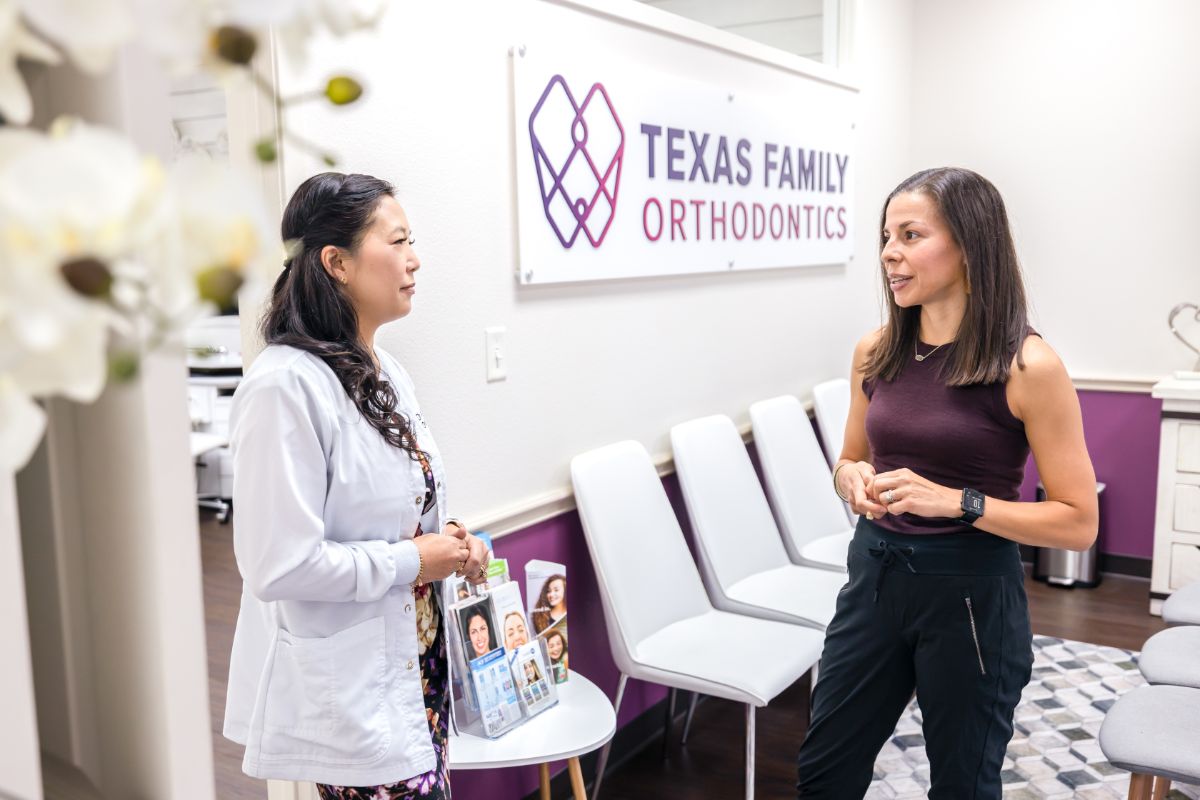If you’ve been considering straightening your smile with orthodontic treatment, there’s never been a better time! Today, there are more options than ever and we’re happy to offer everything from traditional metal braces to Invisalign clear aligners here at Texas Family Orthodontics. One of those options isn’t as well known as some of the others, even though it’s effective, discreet, and innovative! That’s why we’re telling you everything you need to know about lingual braces.
Lingual braces use brackets that are placed on the back of the teeth for a virtually invisible treatment process and come with a number of benefits, including:
- digital diagnosis and bracket placement
- Nitinol smartwire programmed with the exact movements your teeth need to make
- slim brackets with a low profile
- Curved wires that let you brush and floss like normal
- Fewer office visits than traditional braces
If you’re not familiar with lingual braces, you may be wondering how they work and what you need to consider before choosing them. To learn more about how this exciting treatment can give you a confident smile you’ll love, keep reading below!
What are lingual braces?
Lingual braces work the same way as traditional braces. Each appliance puts continuous pressure on the teeth to move them into straighter positions over time. This is accomplished by using brackets and wires to apply the gentle force necessary to shift the teeth. With traditional braces, the brackets are affixed to the front surface of the teeth, but with lingual braces, brackets go on the back side facing the tongue. This makes them almost completely hidden and invisible, something our more image-conscious patients really appreciate!
How do lingual braces work?
The first step in any orthodontic journey is a consultation with an experienced orthodontist. When you schedule your initial visit with Dr. Vo, she’ll examine your teeth and bite to determine any issues that may be present and how severe they are. She’ll listen to your concerns and help you set a goal for your smile so you’re on the same page about the final results. Following this, Dr. Vo will make a recommendation for the treatment options that will work best for you and your smile.
If Dr. Vo believes you’re a good candidate for lingual braces and you decide to move forward with treatment, we’ll begin the process at that same appointment. First, we’ll use a 3D scanner to create a digital replica of your teeth and bite. This will allow Dr. Vo to plan and create a customized treatment plan for your unique smile!
The brackets we use are customized to fit your teeth perfectly, then placed on the back of each individual tooth with the wire connecting them. These wires are customized according to each patient’s specific needs, so you’ll have regular follow-up visits with us. However, the smartwire moves according to your particular treatment plan, so you may not need to come in for adjustments as often as someone in traditional braces!
When it comes to putting on lingual braces, it’s essential that we have the perfect fit from the beginning since the brackets and wires are more challenging to place. To properly position the braces, we use a customized tray to glue all the brackets to the teeth at the same time in exactly the right place.
Once lingual braces are placed on your teeth, they’ll work in much the same way as traditional braces do to give you a beautifully aligned smile.
What are the pros and cons of lingual braces?
The most obvious benefit of lingual braces is how subtle they are! Many teens and adults worry that traditional braces won’t be a good fit for their lifestyle, especially in social or professional situations. Lingual braces offer all the benefits of traditional braces but move your teeth from their hidden position! And unlike clear aligners, they don’t need to be taken in and out for eating and drinking. Once they are on, you won’t need to remember to wear them.
Another cosmetic bonus is that any discoloration that may come from wearing braces will be on the inside of your teeth instead of on the more visible outer surfaces. This can give you an added boost of confidence in your smile! Lingual braces can also provide a more comfortable experience once you’re used to them because they provide a custom fit.
That being said, lingual braces are unique and may not be the best fit for every patient. Since they’re a bit more complicated to place and maintain, we won’t typically recommend them for patients who have certain more complex cases. For example, patients with an extreme or deep overbite may find too much pressure is put on the brackets due to the bite, causing them to detach too easily. When you schedule a consultation with us, Dr. Vo will let you know if you’re a good fit for lingual braces.
Having braces on the back of your teeth can take some getting used to, so you may experience some minor difficulties with speech, especially in the early days. This can result in a slight lisp, due to the contact the tongue makes with the back of the teeth when you’re speaking. This side effect will almost always disappear relatively quickly, however!
As with any orthodontic treatment, some temporary discomfort and soreness may occur. With lingual braces, this soreness is mostly felt on the tongue and may be more noticeable when you’re eating or speaking. Don’t worry, though—this pain and irritation will subside in time.
Say hello to a straighter smile with Texas Family Orthodontics
If you’re looking for the most subtle way to straighten your teeth, lingual braces can be an excellent alternative to traditional braces and clear aligners! If you’d like to learn more about this exciting option, get in touch today to schedule your FREE consultation with Dr. Vo. Your best smile is waiting for you!
 Free Consult
Free Consult


